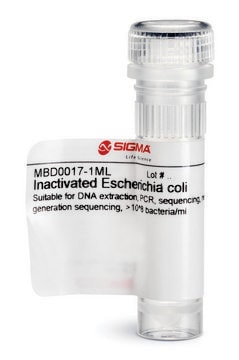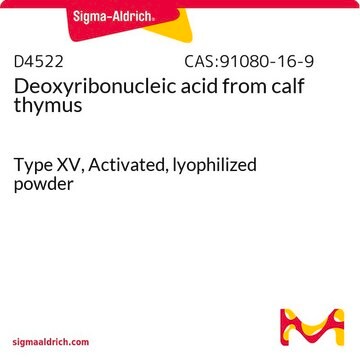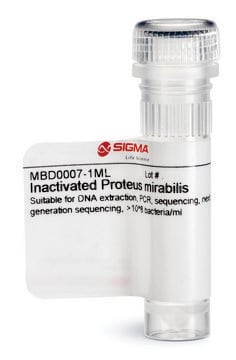MBD0013
Microbial DNA standard from Escherichia coli
Suitable for PCR, sequencing and NGS, 10 ng/μL
Sinonimo/i:
E.Coli
About This Item
Prodotti consigliati
Livello qualitativo
Forma fisica
liquid
Concentrazione
10 ng/μL
tecniche
DNA extraction: suitable
DNA sequencing: suitable
PCR: suitable
Compatibilità
suitable for restriction endonuclease digests, PCR amplification, Southern blots, and sequencing reactions
Condizioni di spedizione
ambient
Temperatura di conservazione
−20°C
Categorie correlate
Descrizione generale
Read here how to use our standards to ensure data integrity for your microbiome research.
Applicazioni
Suitable for Quantitative standard for PCR, Sequencing and NGS
Caratteristiche e vantaggi
- Individual microbial standard for microbiomics and meta-genomics workflow
- Suitable standard for PCR, sequencing and NGS
- Improve Bioinformatics analyses
- Increases reproducibility
- Compare results lab to lab
Stato fisico
Altre note
Codice della classe di stoccaggio
12 - Non Combustible Liquids
Classe di pericolosità dell'acqua (WGK)
WGK 1
Punto d’infiammabilità (°F)
Not applicable
Punto d’infiammabilità (°C)
Not applicable
Certificati d'analisi (COA)
Cerca il Certificati d'analisi (COA) digitando il numero di lotto/batch corrispondente. I numeri di lotto o di batch sono stampati sull'etichetta dei prodotti dopo la parola ‘Lotto’ o ‘Batch’.
Possiedi già questo prodotto?
I documenti relativi ai prodotti acquistati recentemente sono disponibili nell’Archivio dei documenti.
I clienti hanno visto anche
Articoli
DNA standards enhance metagenomics research integrity, offering precise species study and mixed community standards.
Il team dei nostri ricercatori vanta grande esperienza in tutte le aree della ricerca quali Life Science, scienza dei materiali, sintesi chimica, cromatografia, discipline analitiche, ecc..
Contatta l'Assistenza Tecnica.











